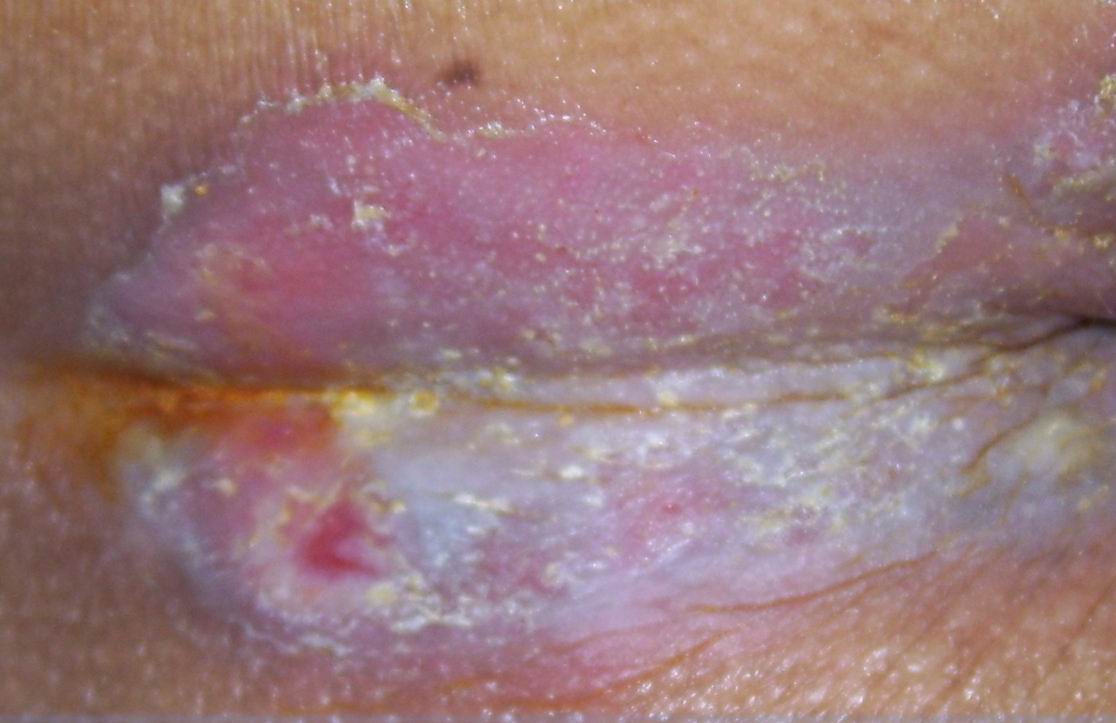1. 2008.12.13 Diabetes Urinary tract infection (UTI) : About three months ago, patient's residue of urine after performing urine catheter occasionally showed brownish color and a minor fever occurred as well. Our urologist suggested Cravit antibiotic, a general purpose type, for the treatment. After three-month treatment, patent still carried a minor fever with abnormal urine color occasionally. The urine analysis was then carried by an urology clinic and its result showed enterobacter aerogenes infection. A repeat urine analysis was also performed in a local hospital and showed serratia marcescens infection. In order to confirm the prior analysis, a urine analysis was performed in a regional general hospital and showed enterococcus infection. Three urine analysis showed three different results were truly somewhat confused. In December, our home care medical support team visited us and suggested that patient's condition did not show significant symptomatic condition and no urgency to use specific antibiotic at this stage. To sustain current observatory condition without using the specific antibiotic might be better choice. Since patent may need the specific antibiotic treatment at emergency condition in the future and we need to make sure the specific antibiotic is still viable then. The medical support M.D. mentioned that the inconsistent urine analysis result was not unusual since the above three bacterium might be already resided in the body and no further special treatment is required as long as no symptomatic condition occurred.
Urine analysis procedure can be downloaded from Here.
Usage of antibiotic and its side effect on elder patient can be downloaded from Here.
Infection Monitoring Manual and Diabetes UTI Treatment can be downloaded from Here.
Bacteria infection and its antibiotic treatment can be downloaded from Here.

|
Carson_2008_Wound Care for Physician.pdf Size : 0.447 Kb Type : pdf |
2. 2008.06.15 Suspect of pressure sore at tailbone (sacrum): Patient suffered a major skin wound along the tailbone (sacrum) in the past two months. This skin wound was a result of urine and stool contamination without proper skin cleaning treatment in time. As suggested by related medical staff, a vitamin barrier cream (Zinc Oxide with Vitamins B5 and F) was applied to the skin wound around tailbone. This treatment last for two months but no significant improvement on the skin wound as illustrated in the picture below. This skin wound could get worse when patient suffered urination and stool contamination occasionally, especially upon diarrhea symptom. Furthermore, the skin wound could be enlarged when placed patient on the wheelchair to perform excretion processes without proper cushion support on the hip. As shown in the picture below, a very similar appearance as typical pressure sore @ stage 2 except no blister noticed in our case. We discussed this with experienced doctors and home care professionals and decided to stop using the barrier cream right away. As recommended by the experience home care professional, only Beta-dine ointment 1% was used for the skin wound treatment with additional emphasis on keeping the skin would area dry. The troubled skin wound of the patient finally cured after one and half a month later. For us this a valuable lesson learned on the skin wound treatment.
The useful links on prevention and treatment of bed (pressure) sore are listed below:
1. Pressure Sore Prevention and Treatment
2. A useful guide on skin wound and treatment can be downloaded from Here.
